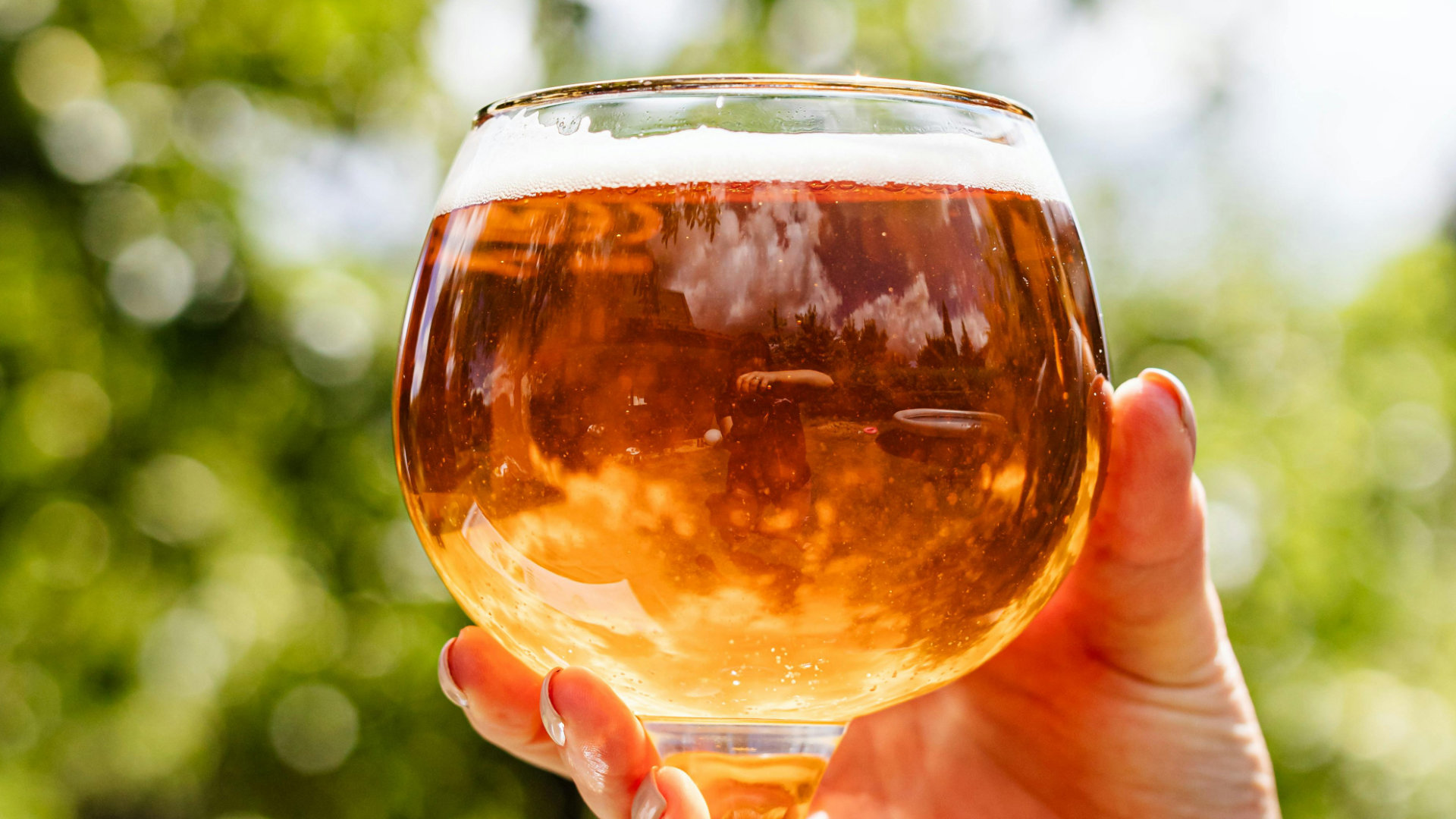Homed on a working organic farm in the foothills of the Preseli Hills in North Pembrokeshire Bluestone Brewing Company have been brewing their award winning beers since 2013. Their name is inspired by the local stone from which the buildings are built. If bluestone rings a bell you’ll know that it’s the stone that makes up part of Stonehenge, which was remarkably transported from the Welsh coast to Wiltshire - that’s more than 250 miles - over 5000 years ago.
What sticks out about this brewery, apart from their epic brews made with local spring water, are their inspiring eco credentials. In 2018 they were the first brewery in the world to be given the Green Key Accreditation, an international award that recognises environmentally sustainable businesses. The following year they won the Best Sustainable Tourism award at The Pembrokeshire Tourism Awards. And it’s easy to see why: they have clearly put a lot of thought into the way they roll over there in Pembrokeshire. For starters, they operate a zero waste brewing process where the spent malt and yeast goes to neighbouring cows and their spent hops go off to the local gardening club. They use a reed bed filtration system for waste water, and have installed solar panels on the brewery roof. Other roofs on site - the events stage and toilets - are wild flower green roofs. Visitors to the taproom and shop or to their popular community and music events get to do their own recycling when they use the compost toilets and the urinals made from upcycled beer barrels.
Another reason to raise a glass to Bluestone Brewing Co. is their Community Green Hop Brew Day when they brew up using wet hops grown and picked by their community. As well as being a fantastic way to bring together locals around a pint or two, the profits from the sale of the green brews are donated to The Watershed Foundation to support those affected by last year’s devastating fire at Moria migrant camp in Lesbos, Greece.
I caught up with Emily Hutchinson from the brewery to discover more.
>> Tell us how it all started...were any of you homebrewers before opening Bluestone Brewing Co?
The Brewery was established in 2013 and was a way of diversifying the family farm. Simon (owner) had never brewed commercially before and had only a small amount of home brewing experience. Simon’s good friend, Tony, is the owner of Saltaire Brewery in Yorkshire and his help was invaluable when we first started brewing. All of our brewing team have completed courses with Brewlab but a lot has been learnt “on the jobâ€.
>> Your brews sound fantastic - which ones are the most popular? Any seasonal beers coming out?
Bedrock Blonde was our first ever beer and still remains our best seller. It’s easy drinking and also gluten free, so it appeals to a wide audience. As IPA’s have grown in popularity over the past few years, we’ve introduced lots of new beers to our range - our most popular IPA right now is Stone Cold. We’re in the process of a bit of a brand refresh and will be relaunching our website very soon - we’ll be releasing three new beers to coincide with the relaunch so keep an eye out for those!
>> Do you think the craft beer scene in Wales differs at all from the rest of the UK? In what way, if so?
There are a lot of amazing breweries in Wales and some that are leading the way for Craft Beer in the UK (Polly’s & Wild Horse to name just two), but as a whole I do think that Wales is slightly behind in the craft beer revolution. You’ll find plenty of great craft beer in the cities, but it’s taking a little longer for the more rural pubs to catch on.
>> We’re super inspired by all your green credentials and your award for Best Sustainable Tourism in 2019 and the Green Key Accreditation - how easy is it for a brewery to be more eco-friendly?
We are very lucky as we are based on a working farm, it’s easy for us to feed our waste to our animals and we have the land to put in reed bed filtration systems and compost toilets. There are plenty of small things that other Breweries can do to be more eco-friendly, even when they are based in industrial units and big cities. Simple changes like switching from vacuum pack plastic wrapping to cardboard boxes or ensuring that your merchandise is responsibility sourced and made from eco friendly materials. We hope that we might inspire other breweries to look at their practices and make small changes to become more sustainable.
>> It’s undoubtedly been a really tough year and the brewing industry is no exception - but looking forward now, what’s on the cards for the rest of 2021?
2020 was definitely the toughest year for our business but 2021 is actually looking like it could be our most exciting! Lockdown gave us some time to really get organised and put some solid plans in place for our future. We are in the process of refreshing our branding and will be rolling out our new labels and designs in the coming months. We’ve also gone into business with another local company and opened our first ever restaurant in March 2021 - it’s a pizza and beer restaurant in St Davids, Pembrokeshire. It’s an amazing opportunity for us to really promote our beer and something very new and different for us all to get our teeth into.
>> Your community green hop brew is such a fantastic project and a great way to support an important cause. Which hops does your community grow and what green brew can people look forward to ordering this autumn?
We started with Cascade hops so that’s what our neighbours are currently growing and that’s what will go into our next community brew in the autumn. Each year, the recipe has been slightly different so who knows what we might end up with this year! That’s what we love so much about this beer, every brew is completely unique.
>> Who would be your dream drinking buddy and what brews would you share?
We all thought long and hard about this and there’s a long list of people we’d love to have a drink with but we decided that David Attenborough would be a good choice. He’s seen so much and you could just sit and listen to him for hours over a pint. We’d love to show him around the Brewery and maybe he could give us some tips about what else we could be doing for the environment around us. We’re pretty sure he’d enjoy our Green Hop community beer!











